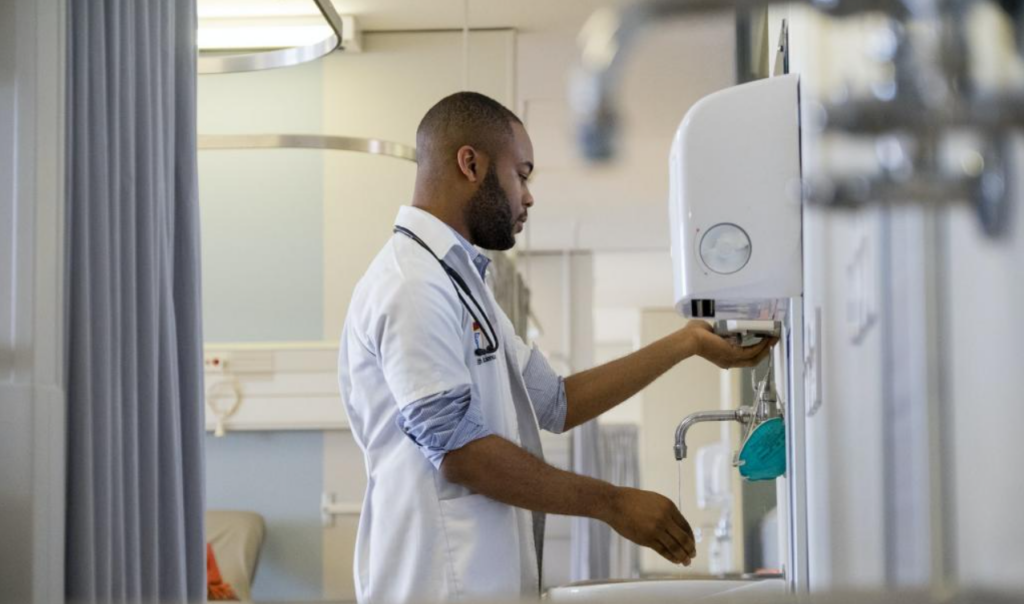Sepsis definition? Identification, management, and Prevention 2023

Derek Watts, a South African television personality, recently revealed that he was suffering from sepsis and would “basically have to relearn how to walk.” Sepsis is a life-threatening condition that occurs when the immune system overreacts to an infection in the bloodstream.
This excessive response can cause organ damage. Sepsis must be promptly diagnosed and treated to prevent septic shock. In 2017, approximately 48.9 million people were affected by sepsis, and 11 million perish as a result. Ina Skosana of The Conversation Africa spoke with pathologists at the National Institute of Communicable Diseases about the disease and its effects.
What results in sepsis?
Infections caused by bacteria, fungi, and viruses can result in sepsis and septic shock. The condition can be caused by infections acquired in a hospital setting, but it can also be caused by infections acquired in the community.
Common causes of sepsis exist. These include infections of the respiratory system (such as pneumonia), the genitourinary system (such as urinary tract and/or kidney infections), the gastrointestinal system, and in the clinical setting, catheter sites. Common causes of sepsis include infections of the central nervous system (meningitis) and skin and soft tissue (surgical site, incisions or burns).
Pneumonia, primarily caused by bacterial pathogens, is the most prevalent infection in septic patients worldwide.

Who is susceptible to sepsis?
Any patient with an infection is susceptible to developing sepsis. However, infants younger than one month and those older than 65 years have a greater risk of developing the condition.
Those with weakened immune systems, such as those with HIV or those undergoing chemotherapy, are also at elevated risk for sepsis. Additionally, prolonged hospital stays or admission to an intensive care unit (ICU) can increase the likelihood of sepsis.
Other risk factors include chronic diseases like diabetes, kidney disease, or chronic obstructive pulmonary disease, patients with implanted medical devices, and a history of protracted antibiotic use.
What symptoms are associated with sepsis and septic shock?
The symptoms of sepsis are vague. These may include any of the following:
- Fever
- Tachycardia is a rapid heartbeat.
- Tachypnea (rapid respiration)
- Altered mental condition (confusion)
- particularly in children, lethargy
Septic shock is the next stage of sepsis. This condition is characterized by hypotension, hypovolaemia, and organ dysfunction.
Typically, patients present with profound confusion or loss of consciousness.
How do physicians diagnose sepsis and septic shock?
There are numerous diagnostic tests for sepsis and septic shock. The clinical syndromes of sepsis and septic shock are characterized by a combination of signs, symptoms, laboratory and physiological abnormalities.
For sepsis screening, a number of clinical variables and instruments, such as vital signs (heart rate, respiratory rate, temperature, and blood pressure), laboratory blood tests (confirmation of infection), and clinical examinations, must be evaluated.
Typically, blood samples are collected to detect bacterial and fungal contaminants. Other laboratory tests may be conducted in an effort to identify the source of the infection.

Imaging studies can be utilized to identify or detect infection sites. For instance, a chest x-ray is used to diagnose pneumonia. Ultrasound can detect gallbladder and kidney infections. CT scans are utilized to diagnose infections in the liver, pancreas, and abdomen. In addition, magnetic resonance imaging (MRI) can detect infections in soft tissue or bone.
How is septicemia treated?
In order to increase the likelihood of a patient’s recovery, sepsis must be treated promptly, thoroughly, aggressively, and appropriately after diagnosis. ICU patients with sepsis require strict monitoring and treatment. This is because stabilizing septic patients may require life-saving measures.
When sepsis is identified, intravenous fluids should be administered as soon as feasible, preferably within the first three hours.
In addition, it is recommended that patients with acute respiratory distress syndrome be admitted to an ICU and that mechanical ventilation be used for respiratory support. Additionally, the etiology of sepsis must be controlled. This may involve evacuating an abscess or replacing an intravenous line.

How does one prevent sepsis?
To prevent sepsis, both the community and healthcare professionals are responsible for preventing the spread of infections.
Infections can be prevented in the community by managing chronic medical conditions. By preventing infections or reducing their severity, vaccinations, for instance, prevent between four and five million fatalities annually. By practicing appropriate hand hygiene, the risk of diarrhoea is reduced by 40%. And clean water and sanitation reduce the global disease burden by 10%.
In order to prevent sepsis in healthcare facilities, appropriate infection prevention and control measures that can reduce infections by 50 percent must be implemented.
Early recognition of sepsis and administration of antibiotics can reduce the likelihood of sepsis leading to death. Even if the underlying infection is not evident, anyone exhibiting signs and symptoms of sepsis should seek medical attention immediately.
Sepsis is a significant threat to public health. Its management can lead to healthier societies.
